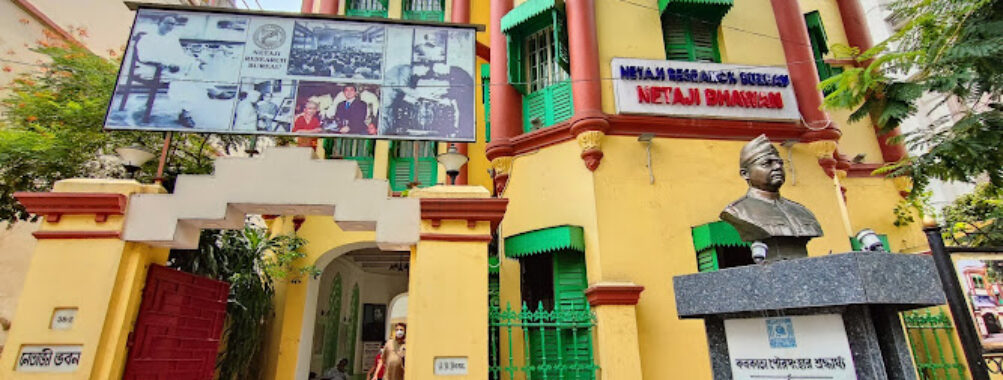
Netaji Bhawan
“`html
Table of Contents
Description
Netaji Bhawan, a place that quietly hums with history, is one of those rare spots that make you pause and reflect. It’s not just another museum or a tourist stop—it’s the ancestral home of Netaji Subhas Chandra Bose, one of India’s most fearless freedom fighters. Walking through its corridors almost feels like stepping into a time capsule. The air inside carries a sense of purpose, the kind that makes you imagine what it must’ve been like when Netaji himself walked through those same halls, planning his next move for India’s independence.
The house has been carefully preserved, now functioning as a museum and research center. You’ll see photographs, letters, and personal belongings that tell stories far richer than any textbook. There’s even the car Netaji used during his daring escape from British surveillance in 1941—it’s right there, quietly sitting in the courtyard, a tangible reminder of his courage and ingenuity. It’s one of those details that gives you goosebumps if you’re into history even a little bit.
Now, I’ll be honest—if you’re expecting flashy exhibits or interactive screens, this isn’t that kind of museum. It’s more understated, more real. Some parts feel a bit aged, but that’s part of the charm. You can sense the weight of time here. And while not every visitor will find it thrilling, those who have a soft spot for India’s freedom movement or for stories of rebellion and resilience will walk out moved. It’s not just a place you visit; it’s one you feel.
Key Features
- The ancestral home of Netaji Subhas Chandra Bose, preserved as a museum and research center.
- Exhibits include personal belongings, letters, photographs, and documents related to Netaji’s life.
- Features the car used in his famous 1941 escape from British surveillance.
- Dedicated research center for scholars studying India’s independence movement.
- Guided tours available that provide deeper insights into Netaji’s life and legacy.
- Child-friendly environment with educational value for school visits.
- Wheelchair accessible parking available, though entrance accessibility is limited.
Best Time to Visit
If you ask me, the best time to visit Netaji Bhawan is between October and March. Kolkata’s weather is at its friendliest then—pleasant enough to stroll around without melting under the sun. The winter air has this crispness that makes exploring historic places feel a bit more cinematic. And if you happen to be around on January 23rd, Netaji’s birthday, you’re in for something special. The atmosphere around the Bhawan becomes electric with tributes, flowers, and people from all walks of life coming to pay their respects.
Avoid the peak summer months if you can. Kolkata’s heat can be unrelenting, and since the museum isn’t heavily air-conditioned, it can get a bit stuffy. Monsoon season, on the other hand, brings its own charm—the rain tapping on the old windows adds a melancholic touch to the visit. But, you’ll have to dodge puddles on the way, so plan accordingly.
How to Get There
Reaching Netaji Bhawan is pretty straightforward. It’s located in one of Kolkata’s well-connected neighborhoods, so whether you’re coming by metro, cab, or even an auto-rickshaw, you’ll have no trouble finding it. The nearest metro station is just a short walk away, and local taxis are always buzzing around the area.
If you’re staying somewhere central, like near Park Street or Esplanade, it’s just a quick ride. I remember once taking a tram part of the way—slow, yes, but there’s something nostalgic about it, almost like time slows down before you step into history. And if you’re driving, parking is available nearby, though it can get a bit tight during weekends or holidays.
Tips for Visiting
Here’s the thing about visiting Netaji Bhawan—it’s not a place to rush through. Give yourself at least an hour or two to really take it in. Read the plaques, look at the photos, let the silence sink in. It’s one of those experiences that grows on you the longer you stay.
- Arrive early: Mornings are quieter, giving you space to explore without the crowd.
- Photography: Check the rules before snapping pictures; some areas may restrict it.
- Guided tours: If available, take one. The guides often share anecdotes you won’t find written anywhere.
- Accessibility: While parking is wheelchair-friendly, the entrance and interiors might be tricky for those with mobility challenges.
- Combine your visit: Pair your trip with nearby attractions or a stop at a local café afterward—it’s a good way to reflect on what you’ve just seen.
- Respect the space: This isn’t just a museum; it’s a part of India’s living history. Keep voices low and treat it with the reverence it deserves.
One personal tip? Bring someone who loves stories. This place sparks conversations—the kind that linger long after you’ve left. I remember debating with a friend about what might’ve gone through Netaji’s mind as he planned his escape. That’s the beauty of places like this—they don’t just tell you history; they make you feel it.
In the end, Netaji Bhawan isn’t about grand displays or modern exhibits. It’s about emotion, memory, and the spirit of a man who refused to bow down. For travelers who crave authenticity and meaning, it’s an unmissable stop in Kolkata. You leave not just with photos, but with a deeper sense of connection—to the past, to courage, and maybe even to yourself.
“`
Location
Places to Stay Near Netaji Bhawan
Find and Book a Tour
Explore More Travel Guides
No reviews found! Be the first to review!